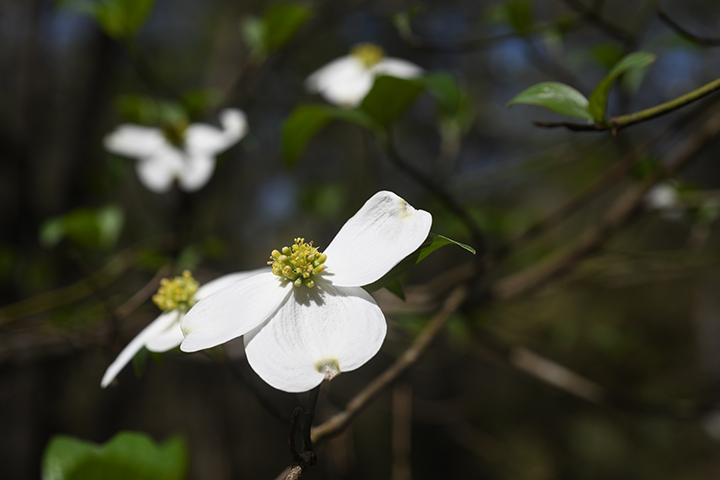Les Harrison
Contributor
The ample rainfall recently has accelerated the return of greenery to Madison County. The slow, steady drizzle was punctuated by the occasional downpour.
The many native plants have, in turn, responded to the liquid encouragement. Flowers of almost every hue and tone are exhibiting this season’s finest display of colors and texture.
Rain lilies are making their brief appearance in roadside ditches and in damp, isolated sites around the region. Sparkleberries are rendering hundreds of tiny bell-shaped blooms which give the plant the appearance of a frosty wrap.
While usually not as obvious, many of the trees are blooming too. Pine tree blooms are almost never admired for their beauty or color, though no one can miss their ever present pollen.
However, there are a few trees which are currently delivering a display of concentrated color not associated with yellow-green dusting on vehicles. Dogwoods and crabapples create a striking early spring contrast to the fresh pale green leaves in the forest.
The local flowering dogwood, Cornus Florida, is a native sub-canopy tree which grows in much of the eastern and southern U.S., and northern Mexico. It is a member of a genus which includes over 30 species found in cooler regions of North America, Europe and Asia.
Sub-canopy trees commonly grow under much taller species and thrive in the partial shade. Dogwoods reach about 30 feet in height, well below many of the local oaks, pines and sweet gums but can handle direct sun.
These trees are most commonly found in fertile, well-drained soil. It does best in a neutral to slightly acidic soil, with a pH range of 6.0 to 7.0, and it has a low tolerance for salinity.
In the past, this tree was valued for its dense and exceptionally hard wood. Larger specimens were cut and milled for use in a variety of products which must withstand heavy or hard use.
Golf club heads, wooden rake teeth, and tool handles all employed dogwood lumber with its slightly pink shade and straight grain. In the south, textile spindles were commonly made from this wood.
Today dogwoods are appreciated most for their brilliant spring blooms. In reality, their blooms are the tiny yellow structures surrounded by four large white bracts or petals.
Local crabapples are currently producing pink blooms with five petals. Malus angustifolia, the scientific name for the southern crabapple, share many characteristics with dogwoods.
These sub-canopy trees reach about the same height as dogwoods and bloom at approximately the same time in spring. While usually found under taller trees, they, too, can handle full sun.
Both trees provide food for wildlife in the form of their fruit. Both trees retain the product of their blooms well into the autumn, with hunters identifying crabapple thickets as productive deer hunting sites.
Crabapple fruit has been used as the basis of jellies for hundreds of years, but not fresh consumption. Related to larger apples, the astringent, bitter taste of crabapples eliminates any possibility of it being a snack option.
Both dogwoods and crabapples add to the spring pallet of color. It more than compensates for the rainy days needed to support these trees.
To learn more about these showy trees in the City of Madison, Cherry Lake and Madison County, contact the nearest UF/IFAS County Extension Office or visit https://sfyl.ifas.ufl.edu/find-your-local-office/. To read more stories by Les Harrison visit: Outdoorauthor.com and follow me on Facebook.

